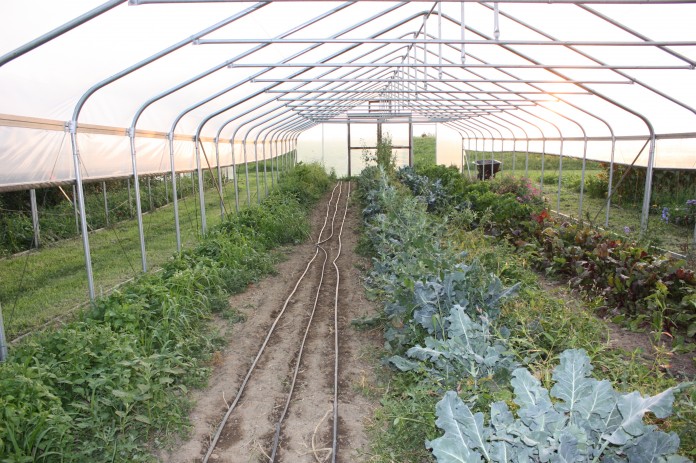PIKETON, Ohio — Specialty fruit and vegetable crop producers looking to gain a better understanding of how the use of high tunnels can boost on-farm profits have the opportunity to attend a joint Ohio State University Extension and Natural Resources Conservation Service workshop on the issue Feb. 8.
The workshop will be held from 9 a.m. to 3:30 p.m. at OSU South Centers in Piketon, 1864 Shyville Road. Registration is $20 and due by Jan. 15.
The workshop will feature OSU Extension horticulturist Brad Bergefurd and Gary Gao, an OSU Extension specialist and associate professor of small fruit crops, both of whom are at OSU South Centers at Piketon. Abbe Copple, district conservationist at Pike County NRCS, will also present information.
Topics will include; site and crop selection; tunnel construction and management; pest and environmental control; high tunnel economics; high tunnel raspberry production; micro irrigation set-up and management; and USDA EQIP program opportunities.
Valuable
High tunnels are valuable because they can extend the growing season by several months, Gao said. For example, growers can extend raspberry production all the way to December using high tunnels, compared to field raspberries with a production season that typically ends in late September or early October, depending on the weather, he said.
“High tunnel production of fruits and vegetables is getting more and more popular as farmers realize the profit value in using the growing technique,” Gao said. “Growers are finding that through using high tunnels, they are able to extend the growing season on their crops in order to produce fruits and vegetables both earlier in the season and to extend the growing season longer than traditional planting.”
“High tunnels are also resulting in yield increases, as growing fruits and vegetables in a protected structure tend to grow better with higher yields. And when you can get an early harvest and later harvest, you can command a higher price, in some cases 50 percent or more.”
Worth the expense
While the structures can be expensive to build, some growers have reported earning enough with one crop to pay off the entire high tunnel investment, Bergefurd said. For example, an industry standard-size high tunnel is 30 by 96 feet and costs between $4,000 to $5,000 to construct, he said.
“But the returns can be good.” Bergefurd said. “For example, depending on the time of the year, the variety planted, and the production technique, for a grower planting tomatoes, one crop can return $10,000 to $20,000 with a single crop,” he explained.
Growers may be able to get financial help in building the high tunnels, according to NRCS’s Copple, who will discuss funding options for growers during the workshop.
For more information on the workshop or to register, contact Charissa McGlothin at 740-289- 2071, ext. 132 or email mcglothin.4@osu.edu. Space is limited, registration deadline is Jan. 15.











